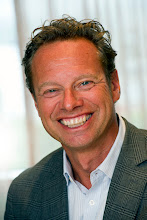In 1998, when our company MphasiS was only a handful of believers crammed in two tiny offices in LA and Mumbai, we got our first real consulting gig. ICICI was at that time a semi-government Indian bank primarily operating in the corporate market. The company was managed by the charismatic K.V. Kamath, who set the Bank on a new course in the relatively uncharted waters of retail banking. This market was dominated by State bank of India, then a horror of bureaucracy. Foreign banks like Citibank and HSBC had made inroads and introduced modern products and services, but they were severely constrained by regulations. Kamath laid out a vision to bring state-of-the-art banking services to all Indians. He put Shika Sharma in charge and hired Jerry Rao and myself to help realize his consumer banking strategy. Years before, Jerry, as a young Citibank executive, had done the unthinkable: he had introduced two-wheeler loans. This was the first product for a market segment largely ignored by other banks. It changed India. Suddenly millions of people could afford a motor cycle and have their self confidence and mobility dramatically improved. Now Kamath wanted to do something similar on a larger scale: create a bank that could ultimately serve hundreds of millions of customers. And..have the foundation up and running in nine months! So Jerry and I went to work on the program plan. We proposed a “broad and thin” presence with focus on customer relationships and products that fit with the different market segments. Kamath wanted to leverage technology as much as possible: from branded phone booths and simple ATMs to flag ship branches in the metro areas.
It was clear that, while many of the concepts from the USA could be applied, the implementation had to fit with the specifics of the Indian market. The initial focus was on addressing the growing middle class, obviously an attractive market segment. Our company, MphasiS, built a call center infrastructure, online capabilities and mobile banking in a matter of months to allow for easy access to banking services. For the major products, like current and savings accounts, deposits, cards and loans existing software packaged were obtained and tied together with a common customer relationship management system. As India has no credit bureaus, databases and algorithms had to be built from the ground up. The “Personal Financial Services” went live as planned. This was a testimony of the tremendous execution capabilities of Shika and her team, backed by the ICICI leadership.
But while there is a sizeable emerging middle class in India, the majority of the Indians are living near or below poverty levels. ICICI had to completely rethink its products and the delivery mechanism to spread its reach and to profitably address the lower echelons of the market. Kamath: “We need to invent a new business model where we can create a distribution base effectively in 600,000 villages in India, and to learn to do that at one-tenth the cost of urban India.”
In his excellent book “The Fortune at the Bottom of the Pyramid”, C.K. Prahalad, claims that "If we stop thinking of the poor as victims or as a burden and start recognizing them as resilient and creative entrepreneurs and value-conscious consumers, a whole new world of opportunity will open up." He points out that the poor are actually paying a “poverty premium”, which can be a factor of 50 or more in financial services. When he did his research, annual interest rates in Mumbai's shanty town, Dharavi (of Slumdog Millionaire fame), were between 600-1000%, while the more affluent paid 12-18%. A model based on low ticket products, high volumes and extremely low delivery cost, would not only present a viable business opportunity but also financially improve the conditions of the poor.
Rather than building a huge organization ICICI decided to tap into local entrepreneurship to acquire clients and collect on loans. They also relied heavily on information technology to keep the delivery cost down. Following the model applied by the Bank of Madura, which ICICI acquired in 2000, they based the business on a core management unit, called the Self Help Group. This is a group of around twenty members (primarily women) who collectively acquire and manage the clients. The Bank doesn't lend to individuals but rather to the Groups who then manage the allocation and collection of the loans. This gives the Group a strong sense of ownership. Products have evolved from micro credit to micro savings (using smart card tech) and insurance. For its technology ICICI teamed up with n-Logue, who placed Internet kiosks in the villages leveraging low cost wireless connections. The kiosk is owned by local entrepreneurs and financed by ICICI. With Internet access the village can now not only start using modern financial services at market rates, they can also get real-time market information, communicate and collaborate to bundle buying and selling power. This has spawned new economic activity in rural areas.
Enlisting a large network of local entrepreneurs to design, market and support products tailored is a formula that not only works for companies in developed economies, it can actually be a way to bring dignity and financial independence to the billions at the bottom of the pyramid.
Wednesday, April 22, 2009
Subscribe to:
Post Comments (Atom)

Yes, you did all that with Jerry, my hat is off to you. Well done! Proud that you and Marlene are friends of mine. Well done! Miss you guys, I do.
ReplyDeleteYes, you did all that - you and Jerry. I saw it. Well done! Great post. K x and love to M, K and A.
ReplyDelete